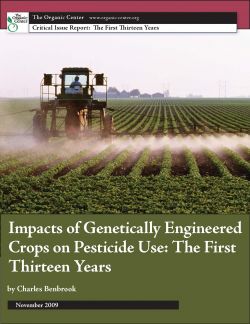Editor's note: We welcome Dan Charles, an author and occasional NPR reporter and editor, as a new contributor to Chews Wise.
By Dan Charles
The most mysterious case of genetically engineered guests showing up, uninvited and unwelcome, in farmers’ fields just got more mysterious this week.
There's no genetically engineered rice for sale in the U.S., but tests of conventional rice seed, starting more than a year ago, have found traces of three separate genetically engineered strains.
The latest case, announced by the USDA this week, hit just as farmers began spring planting in Louisiana.
The case shows just how difficult it is to prevent the spread of genes, or seeds, from one field to another. In rice, the cases of contamination have shut down rice exports to Europe and forced seed companies to take two popular rice varieties off the market.
What everybody in the rice industry wants to know is, How how did genetically engineered plants end up in stocks of conventional seeds?
Here's what happened in the latest case.
Samples of a popular rice variety called Clearfield 131 tested positive for a DNA sequence that's commonly used in many genetically engineered varieties. Then inspectors tested for other DNA sequences, ones that are found in the three specific strains of genetically engineered rice that have been approved for sale but not yet on the market. These tests came back negative.
So the gene that's loose in Clearfield 131 appears to be from non-approved line of genetically engineered rice.
As a result, the USDA banned farmers from planting Clearfield 131 -- one of the most popular rice varieties. Planting in some areas was already underway, though. An industry source says at least two fields were planted with the now-banned variety. Those seedlings will presumably have to be destroyed.
Insiders think the contamination probably occurred at an agricultural research station near Crowley, Louisiana, (the “rice capital of America”) operated by Louisiana State University.
This research station conducted field trials, a few years ago, with several different lines of genetically engineered rice. Most of them were products developed by Bayer CropScience, engineered to tolerate doses of the herbicide Liberty, also sold by Bayer.
Simultaneously, this research station was breeding new conventional varieties of rice and growing small harvests of "foundation seed" -- the ultra-pure stocks that seed companies use in growing the seed that they sell to farmers.
The most popular varieties that this research station has released in recent years are called Cheniere and Clearfield 131. These are also the varieties contaminated with traces of genetically modified rice. (Cheniere was pulled from the market last fall.)
Evidently, pollen from the genetically engineered field trials, or a few stray kernels of rice, found a way to cross the few hundred yards that separated these fields. Perhaps harvesting equipment carried the kernels from one field to the other.
Rice pollen doesn't usually travel from one plant to another, but a windstorm might produce a freak instance of cross-pollination. However it happened, the genetically modified material did end up in foundation seed that this research station released to seed companies.
USDA inspectors have been going through the records of this LSU research station, testing every sample of seed that's been stored, trying to figure out where, and when, the genetic contamination happened. Evidently, it happened at least three separate times.
Rice farmers and exporters, at this point, are wishing they'd never heard of genetic engineering. Exports haven’t actually dropped overall; most countries have agreed to accept U.S. rice exports, as long as the industry appears to be making an effort to fix the problem. But the rice industry is worried that will change.
The lesson appears to be that the agricultural system simply isn't able to ensure pristine separation of different genetic lines of grain. Farming is a messy business; grain and pollen get mixed up.
It's been a tough few months for Steven Linscombe, director of the LSU research station in Crowley. Considering the scrutiny he's under, Linscombe has been notably open and willing to discuss exactly what he did in those field trials.
He's learned a few things. Last fall, when I interviewed him for an NPR story on this saga, he said that he'll never again grow genetically engineered rice on the same research farm with conventional foundation seed. Any field trials of genetically engineered rice will take place at a separate location, with separate cultivation and harvesting equipment.
---
Dan Charles is the author of Lords of the Harvest: Biotech, Big Money, and the Future of Food



